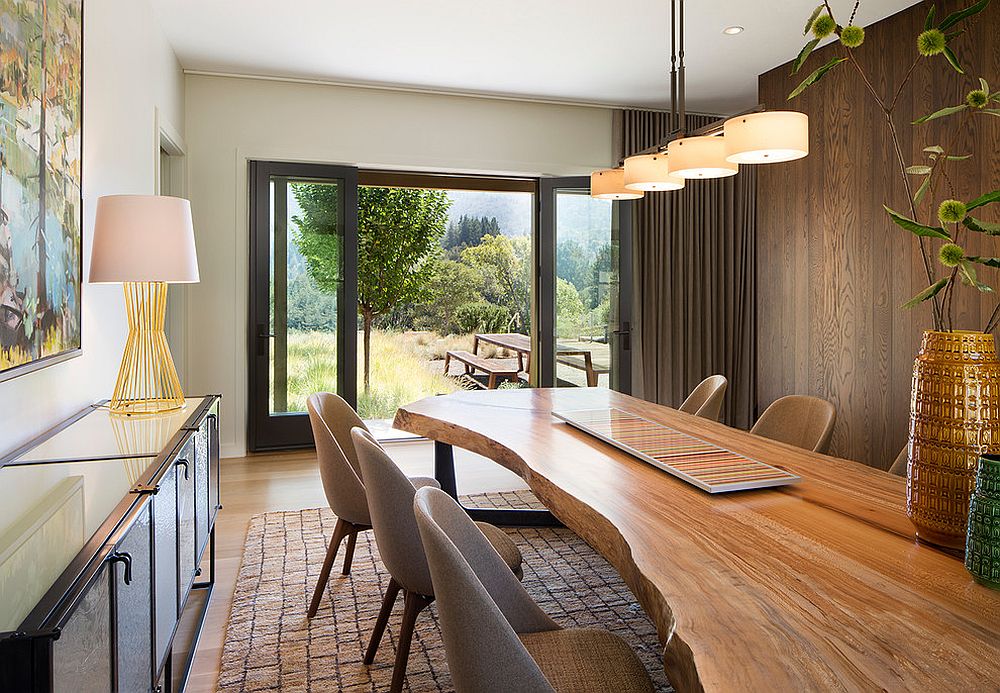
Nothing transforms a room quite like a unique piece of furniture that marries natural beauty with artisanal craftsmanship. Handcrafted live edge tables—featuring the organic lines and textures of raw wood—have become a hallmark of sophisticated interiors, bringing warmth, character, and one-of-a-kind artistry into homes and offices alike. Whether you’re decorating a contemporary loft, rustic cabin, or traditional dining room, a live edge table serves as both functional furniture and a striking focal point.
What Is a Live Edge Table?
A “live edge” table preserves the natural contour of the wood slab from which it’s made. Unlike conventional furniture—where boards are cut into uniform, straight-edged planks—a live edge table retains the wood’s original bark line, knots, and irregular shapes. This approach highlights the tree’s inherent beauty, showcasing growth rings, grain patterns, and subtle color variations that no two slabs share. Visit more details here
Live edge slabs come from many species—walnut, maple, oak, cherry, and even exotic woods like spalted pecan or ambrosia maple. Each species lends its own hue and character: deep chocolate tones in walnut, warm reds in cherry, golden amber in oak, and dramatic light-and-dark contrasts in spalted woods.
Why Choose Handcrafted Over Mass-Produced?
- Individuality
Every handcrafted live edge table is inherently unique. Artisans select each slab for its striking grain, texture, and shape, then craft a bespoke piece that can’t be replicated by factory-made furniture. - Quality Materials
Skilled woodworkers source sustainably harvested slabs and kiln-dry them to prevent warping and cracking. They often incorporate durable, high-quality hardwoods that stand the test of time—unlike cheaper, engineered boards. - Artisanal Techniques
From flattening and planing to sanding and finishing, each step is performed with attention to detail. Artisans may use hand tools to preserve delicate edges, inlay resin to stabilize voids, or apply multiple coats of natural oil or varnish to enhance the wood’s luster. - Custom Design
Handcrafted tables can be tailored to your space: you choose the slab’s dimensions, leg style (steel hairpin, wooden trestle, live edge supports), finish (matte oil, satin polyurethane, charcoal stain), and additional touches like metal inlays or embedded LED lighting.
Styles to Suit Every Interior
- Rustic Charm
A thick oak or maple slab with a clear, natural finish paired with chunky wooden legs or industrial steel frames creates a warm, lodge-inspired vibe. - Modern Minimalism
A sleek walnut slab with live edges left natural, set atop slender black hairpin legs, offers a striking yet understated statement perfect for contemporary lofts. - Industrial Edge
Combine a spalted wood slab with raw steel channel legs or a pipe-style base for a rugged look that blends wood’s organic warmth with metal’s cool durability. - Scandinavian Simplicity
Light maple or ash slabs finished in matte oils, supported by simple tapered wooden legs, bring airy brightness and natural elegance to minimalist spaces. - Eclectic Statement
A colorful resin-filled live edge table—where artisans pour translucent epoxy into knots and voids—adds a bold focal point, ideal for creative studios, eclectic dining rooms, or modern offices.
Functional Elegance: Where to Use Live Edge Tables
- Dining Tables
Create memorable meals around a table that’s rich with texture and history. A live edge dining table becomes more than a surface—it’s an experience that sparks conversation. - Coffee Tables
A smaller slab makes an intimate centerpiece in living rooms. Its unique shape draws the eye, while its sturdy construction handles daily use. - Desks and Consoles
Bring natural artistry to workspaces. A live edge desk infuses character into a home office, helping you feel connected to the natural world even during long hours at the computer. - Conference Tables
In commercial settings, a large live edge table adds prestige and personality to meeting rooms, leaving a lasting impression on clients and employees alike. - Side Tables and Benches
Smaller accent pieces complement larger furniture, providing functional surfaces with sculptural appeal in hallways, bedrooms, or entryways.
Caring for Your Live Edge Table
Proper maintenance ensures your table remains stunning for decades:
- Regular Dusting
Wipe with a soft, dry cloth to remove particulates that could scratch the surface. - Gentle Cleaning
Use a damp cloth and mild soap for spills; avoid harsh chemicals or abrasive cleaners that can strip the finish. - Periodic Oil Treatment
If finished with natural oils, reapply a thin coat every 6–12 months to maintain moisture balance and enhance the grain’s depth. - Avoid Hot Items
Use trivets to protect the wood from heat marks and prevent discoloration. - Control Humidity
Maintain indoor humidity between 40–60% to minimize expansion or contraction of the wood slab.
Investing in Timeless Beauty
While handcrafted live edge tables often carry a premium price compared to mass-produced furniture, they represent an investment in quality, sustainability, and artistry. These tables not only elevate your interior aesthetic but also gain character over time, with minor surface marks and scratches contributing to their story. Moreover, due to their timeless appeal, well-crafted live edge tables can become heirloom pieces passed down through generations.
Final Thoughts
Handcrafted live edge tables merge the raw elegance of nature with human creativity and skill. They transform ordinary rooms into gallery-worthy spaces, creating tactile, visual, and emotional connections to the natural world. By choosing a live edge table, you invite a unique work of functional art into your home—one that celebrates the tree’s life story and the artisan’s dedication, while elevating your everyday living experience.